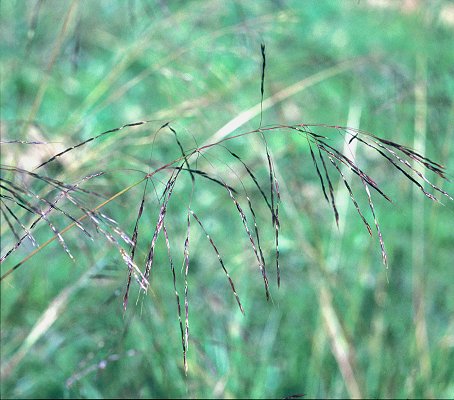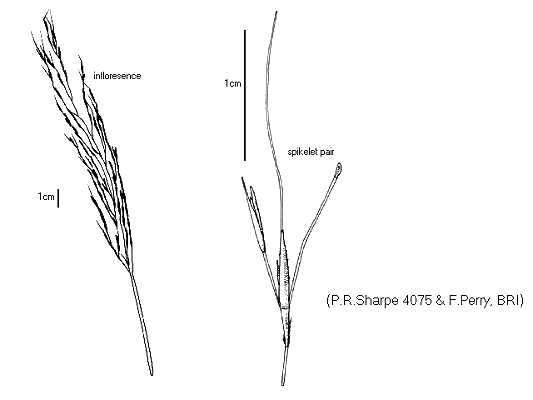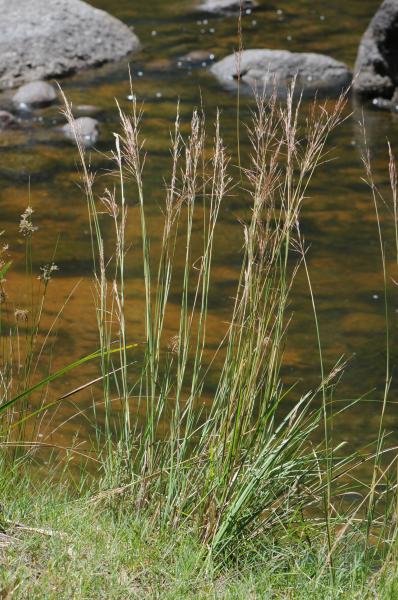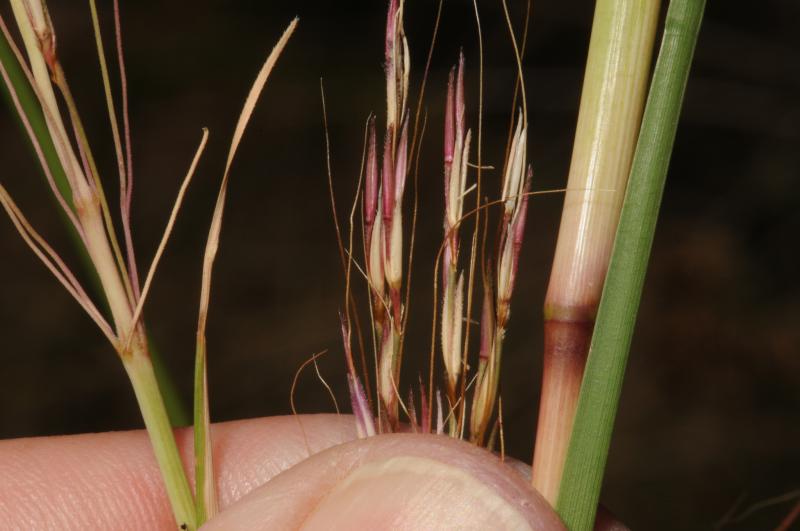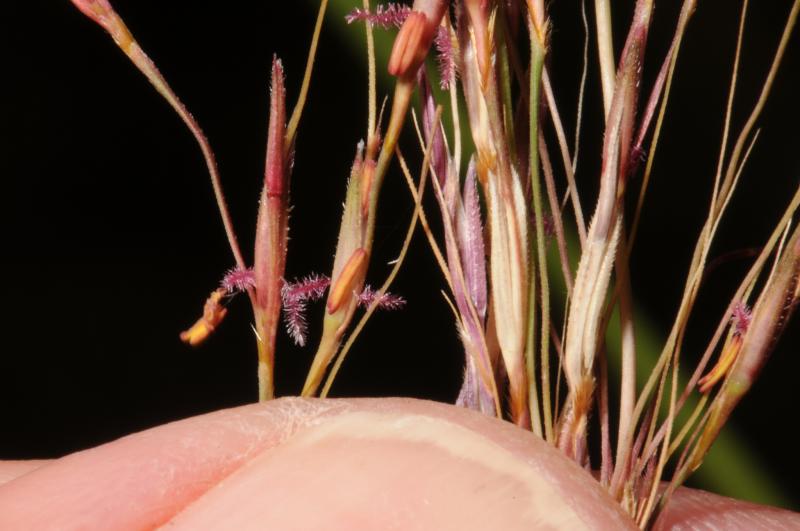Chrysopogon filipes (Benth.) Reeder. Journ. Arn. Arb. 29: 360 (1948).
Classification. (GPWG 2001) : Subfamily Panicoideae. Andropogoneae.
Basionym and/or Replacement Name: Chrysopogon elongatus var. filipes Benth., Fl. Austral. 7: 539 (1878).
Type of Basionym or Protologue Information: LT: Mitchell s.n., Australia (K (photo, BRI); ILT: MEL). LT designated by Veldkamp, Austrobaileya 5(3): 513 (1999).
Recent synonyms: Vetiveria filipes, V. intermedia.
Key references (books and floras): [2002] D.Sharp & B.K.Simon, AusGrass, Grasses of Australia, [2008] S.W.L.Jacobs, R.D.B.Walley & D.J.B.Wheeler, Grasses of New South Wales (186).
Illustrations: [1984] N.T.Burbidge. rev. S.W.L.Jacobs, Australian Grasses (as Vetiveria filipes), [2008] S.W.L.Jacobs, R.D.B.Whalley & D.J.B.Wheeler, Grasses of New South Wales, 4th edn (186).
Habit. Perennial. Rhizomes present, short. Culms erect, 70–100 cm tall, 3–6 -noded. Lateral branches simple or sparsely branched. Ligule a fringe of hairs. Leaf-blades 15–45 cm long, 3–6 mm wide. Leaf-blade surface scaberulous.
Inflorescence. Inflorescence compound, a panicle of rames. Panicle lanceolate, 15–30 cm long, 3–12 cm wide. Rhachis fragile at the nodes.
Spikelets. Spikelets sessile, 1 in the cluster. Companion spikelets pedicelled, 1 in the cluster. Companion spikelets developed, containing empty lemmas, 3–8.3 mm long. Companion spikelet glumes muticous. Fertile spikelets 2-flowered, the lower floret barren (rarely male), the upper fertile, comprising 1 basal sterile florets, comprising 1 fertile floret(s), without rachilla extension, linear or lanceolate, laterally compressed, 8–10 mm long.
Glumes. Glumes dissimilar, firmer than fertile lemma. Lower glume lanceolate, coriaceous, without keels, 5 -nerved. Upper glume lanceolate, coriaceous, keeled, 1-keeled. Upper glume surface scabrous. Upper glume apex mucronate. Florets. Basal sterile florets 1, barren, without significant palea. Lemma of lower sterile floret 100 % of length of spikelet, hyaline, 2 -nerved.
Fertile lemma 7–10 mm long, without keel, 1 -nerved. Lemma apex dentate, awned, 1 -awned. Median (principal) awn from a sinus, 13–26 mm long overall. Palea 0 -nerved, without keels. Anthers 3. Grain 4 mm long.
Continental Distribution: Tropical Asia and Australasia.
Australian Distribution: Northern Territory, Queensland, New South Wales.
Northern Territory: Darwin & Gulf. Queensland: Burnett, Cook, Darling Downs, Leichhardt, Maranoa, Mitchell, Moreton, North Kennedy, Port Curtis, South Kennedy, Warrego, Wide Bay. New South Wales: North Coast, Northern Tablelands, North-Western Plains.
Notes. Found on stream banks and flood flats of the open forest subcoastal country of tropical and sub-tropical Qld and N.S.W. and a few records from northern N.T. Extends to New Guinea. Readily eaten by stock. Flowers Nov.--Sept.


